Why Richard Quinn got the royal treatment
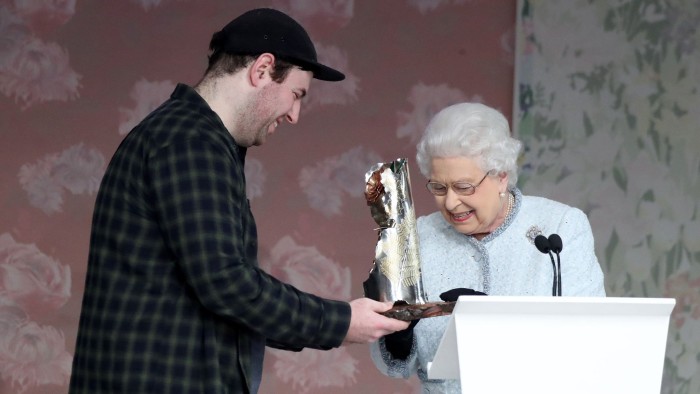
Simply sign up to the Life & Arts myFT Digest -- delivered directly to your inbox.
It was one of the most Instagrammed, tweeted and talked-about moments of London Fashion Week, perhaps even the whole fashion season: Her Majesty Queen Elizabeth II sitting front row (royal blue pillow included) next to Anna Wintour at Richard Quinn’s AW18 show. It was a historic occasion; Her Majesty had never before attended a fashion show. She smiled as models dressed in head-to-toe print, scarf masks and motorcycle helmets strutted down the runway, and then presented the 29-year-old designer with the inaugural Queen Elizabeth II Award for British Design.
But who is Richard Quinn? The London-based designer has had a swift trajectory since graduating from Central Saint Martins in 2016 with a MA in print design. He launched his namesake label last year; style editor Giovanna Battaglia and model and activist Adwoa Aboah are regular clients; Lady Gaga wore a bespoke bodysuit of his for her 2017/18 “Joanne” world tour; he has an exclusive collection on Matchesfashion.com, and his SS18 collection is now on sale at 12 independent retailers around the world.
Yet, despite the hype now surrounding his designs, Quinn’s business is focused on more than his fashion label. From his studio, under the railway arches of Peckham, south London, he outlines ambitions that reach far beyond his own brand. “It makes no sense to me for someone to learn screen printing for four years to then just sit in front of a computer and send their designs off to somewhere else,” explains the young designer, a disarmingly friendly chap in a blue chambray shirt and baseball cap. (So attached is he to his signature headwear, he even kept it on to meet the Queen.) “I want graduates who love textiles to be able to work with the fabric; fashion needs to be more hands-on and more local.”
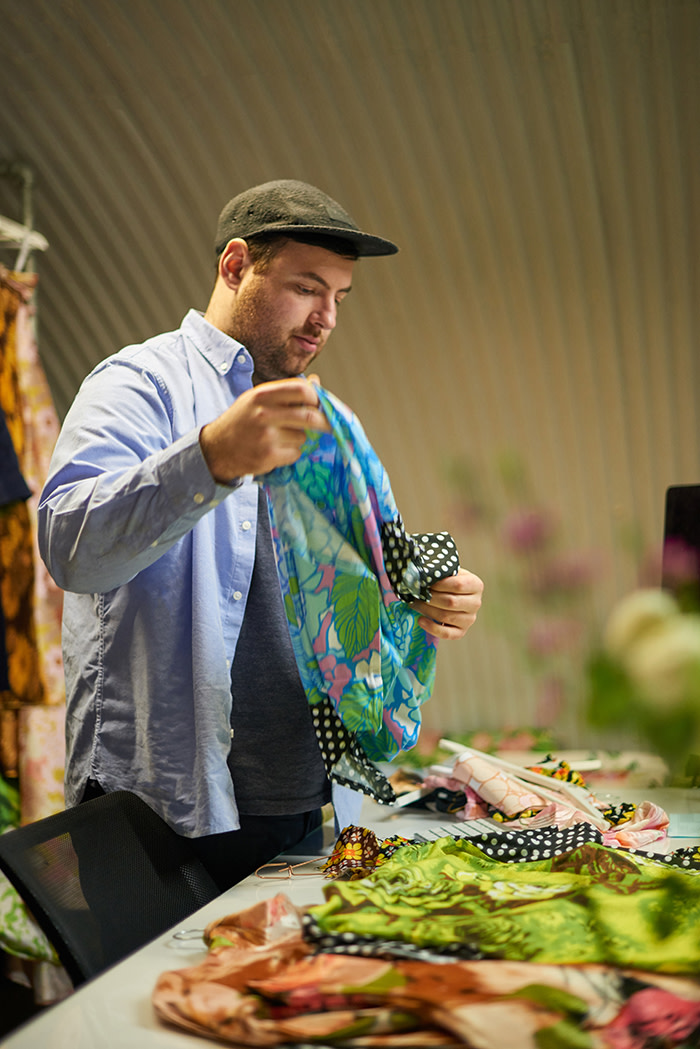
Quinn wants his studio to become a digital print destination for British brands that might otherwise go abroad. In 2017 he received the Design Award from the high-street retailer H&M (which included a commission for a collection that sold out when it hit shop floors last October). He used the prize money to buy equipment. His main focus? Printing technology. “I had ideas about the studio and how I could make my own collections as well as other people’s,” he says. “I wanted to be able to create a space where we could make everything under one roof.”
Running a business is in his family DNA, he adds: “My dad works at the end of the road. His scaffolding business also has an arch.”
Quinn’s studio houses some of the most advanced digital printers on the market. Epson, a Japanese electronics company, donated the printers to Quinn as part of an ongoing partnership established last year when Quinn approached them with his vision for the studio. The main benefit of the kit is its ability to print custom designs on any kind of textile using a wide range of applications; they have higher colour yields, fastness and reproducibility, essential features for printing fabrics for the industrial textile market. Not everything is technologically sophisticated, however. “I actually made both of those myself from scratch,” he says of two large screen-printing tables as we pass.
Quinn wants to encourage collaboration within the industry. His studio currently offers print services to other young upcoming designers, such as Charles Jeffrey Loverboy, as well as established luxury fashion houses.
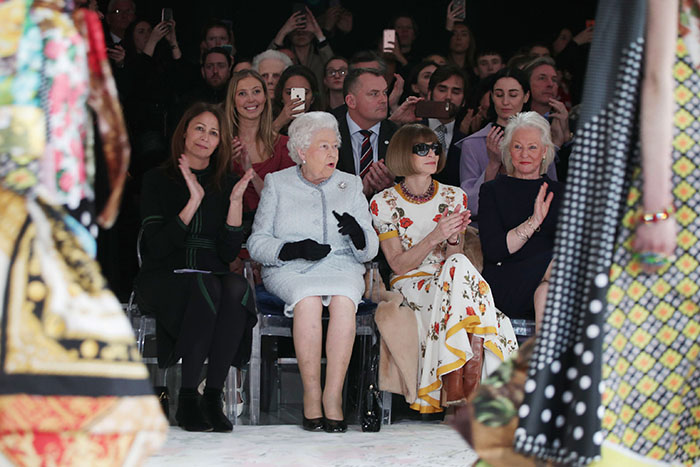
“I have created prints for JW Anderson, Ports 1961 and Burberry,” he says. “What we are able to achieve with these printers is amazing, the vibrancy of the colours we produce and also the shortened lead time is so important. By having everything here, we create more of a dialogue. You can create a print, print it, cut it and have a garment made in a day. It’s this collaboration that I love, we can test print designs and produce them right here in London.”
Localisation is a subject close to Quinn’s heart. His BA collection, which was made out of canvas, was picked up by Stella McCartney, who was looking to sponsor students invested in eco-fashion for MA courses. “McCartney taught me a lot about the wider picture of waste and the effects on the environment that production has on a large scale,” says Quinn. “So, moving forward, not only did I want to create a luxury and aspirational collection, I really wanted that sustainable element behind it. Not making it out of something like hemp but making products on-site and keeping it within London.”
In a survey conducted by Epson, the average item of clothing made outside of the UK (and sold within the UK, France or Germany) travels 40,000km by air, takes four to 24 weeks to be made and delivered and creates CO2 emissions of between 2.7kg-4.3kg. If fashion became localised, Epson says these numbers would drop dramatically: average air travel would be 200km, garments could take as little as three days to be made and delivered, and the carbon footprint would shrink to 0.3kg.
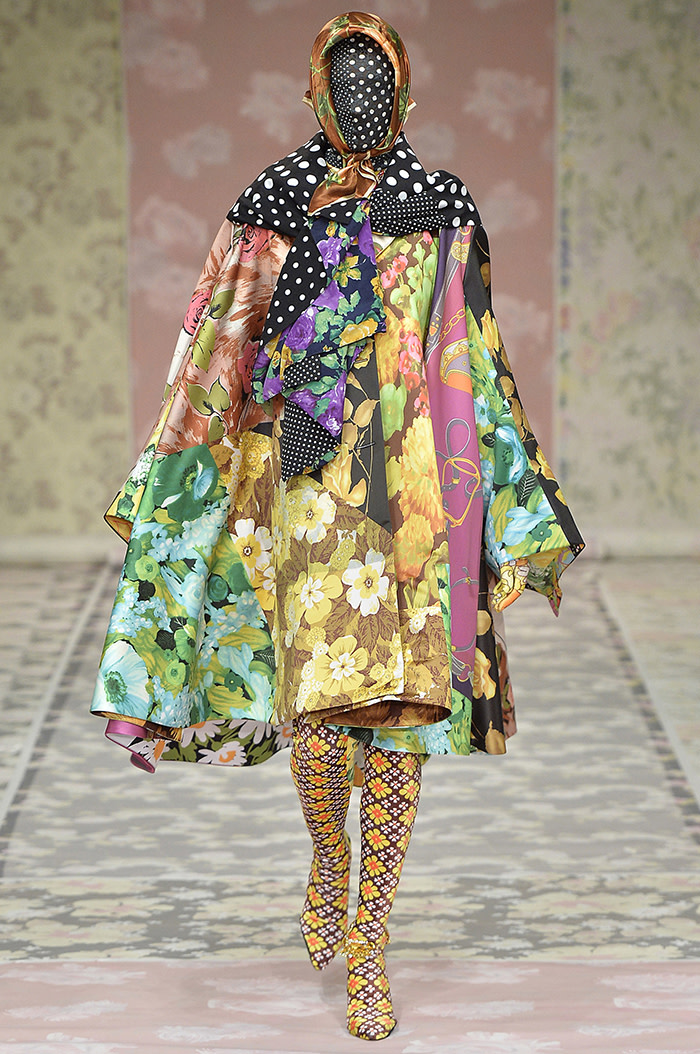
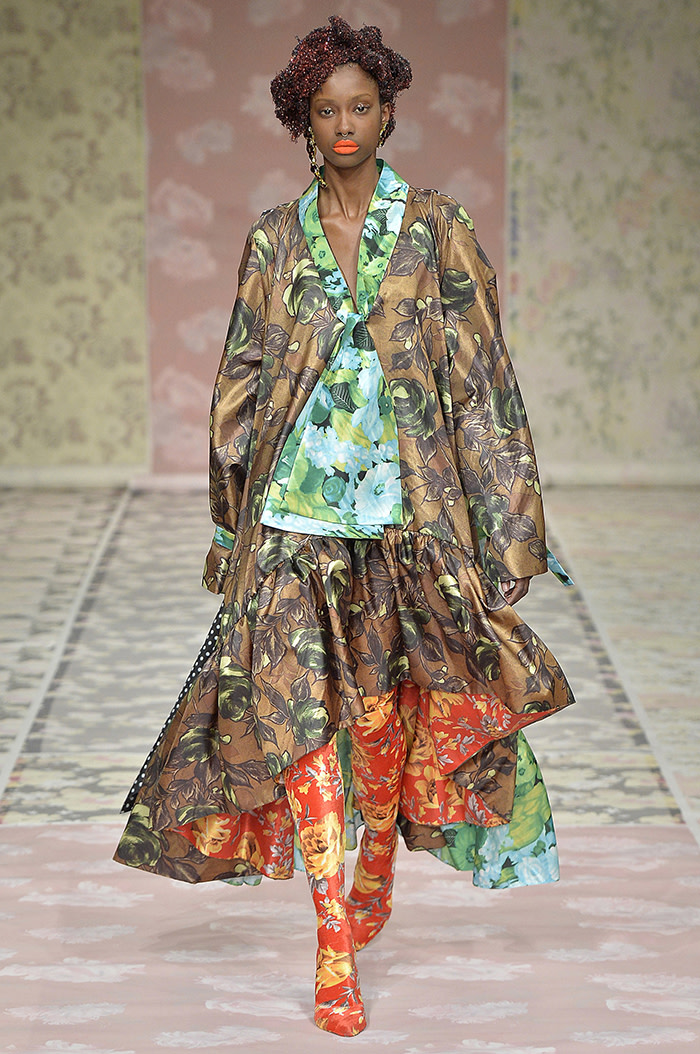
“Fast fashion exists because ideas are fast,” says Quinn. “Having all of our printers, our screen prints and our cutters here means that we can produce things quickly but we also have time to change garments. I can have a conversation with my manufacturers 15 minutes up the road. It makes it easy to implement change. Two weeks before Fashion Week, some designers, who were working with people abroad, were saying to me that nothing arrived. Or it had come back the wrong colour. In other words, their hands were tied, they couldn’t change the outcome quickly. The difference is we can have a brand approach us and someone say, ‘We need this to be screen-printed’, and we can be like: ‘That’s fine, we can do that now.’ ”
Will his success change his current business model? “I don’t see why growth means we need to expand outside of the brand and why manufacturing can’t come back to England,” says Quinn. “If you are going to grow on a huge scale, why can’t we employ or educate people here? You lose control of quality otherwise. That is how it used to work, people use their local resources and trained apprentices. If someone cannot afford to go to university, why not put them on an apprentice scheme where they learn to print hands-on?”
Things are only getting busier for Quinn. “We have bought the adjacent arch next to the studio,” he says. And he’s buying another printer.
Follow @FTStyle on Twitter to find out about our latest stories first. Subscribe to FT Life on YouTube for the latest FT Weekend videos
Comments